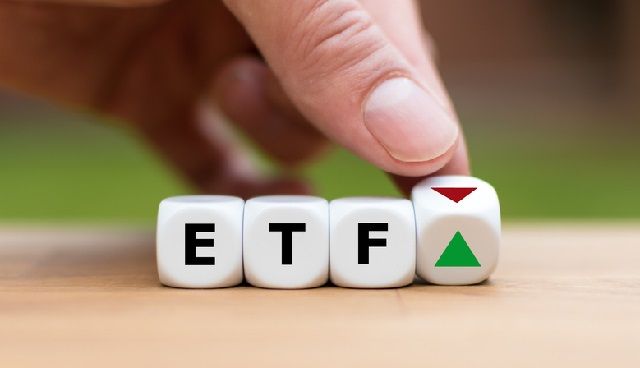The time to review credit holdings may be running out for investors, as Société Générale is forecasting a “mild” recession in its latest report.
Under this scenario, which will not have much of an impact in the short term, the French bank expects corporate earnings to fall next year, putting particular pressure on the high-yield segment of the credit market.
It defines a mild recession as US GDP at +0.7% in 2020; in the first quarter at +1.0% and the second at -0.8%.

The Société Générale report analyses the flow of funds into and out of mutual funds and exchange traded funds (ETFs) globally across all asset classes, mainly using data by provider EPFR Global to identify investment trends.
Since 2013, 77% of all European credit fund inflows went into ETFs, it said (see chart above).
But, given primary market issuance of €310bn year-to-date in European IG, net inflows into European IG credit ETFs ($12.5bn/€11.2bn YTD) look limited, according to news service Credit Strategy Weekly.
Turning tide
Overall credit performance has since recently stopped improving as tighter credit spreads barely compensated for somewhat higher yields, which has triggered net outflows, the report says.
While credit belongs to a smaller asset class within the entire fund coverage, with $1trn (€899bn) out of $32.5trn, the report warns that reversing flows in credit could disproportionately impact other asset classes.
It concedes that data by EPFR covers just under 12% of the entire credit market, and the remainder is majority-owned by institutional investors.
These investors would usually continue buying credit, “as long as safer government bond yields are insufficient to meet their contractual targets”, it notes.
However, under a mild recession scenario, net selling by ETF investors could create “unforeseen” liquidity issues.
The report emphasises that given new regulation, investment banks will not absorb these liquidity issues.
Last Word Research has found that there has been a remarkable turnaround in net flows this year, with more than €13bn pouring into European developed market high-yield bond funds after a torrid 2018 (see chart).
European fund flows versus sentiment of net buyers

The Société Générale report findings are contrary to the position of Efama, the European Fund and Asset Management Association.
ETF market liquid
In June 2019, Efama commented on findings by the European Central Bank (ECB) in November 2018 around liquidity and counterparty risks in ETFs.
It said that looking at market observations for both equity and fixed income ETFs, the secondary market has largely “cushioned” the impact of sudden market shocks, without affecting investors’ ability to redeem their shares, or that of dealers to trade the underlying securities.
“The liquidity and counterparty risks defined in the ECB’s study are not supported by market observations across several recent episodes of market volatility,” it emphasises.
It also points to the ability of dealers to manage their intra-day exposures by making use of their own balance sheet.
Unlike what is often assumed, dealers can choose to not trade an ETF’s underlying securities in the course of a market correction, Efama said, to avoid any significant short-term loss they may incur in a turbulent market.
Recent Mifid II reforms, for example, are gradually contributing to greater trade transparency and to deeper pools of secondary market liquidity, it added.







